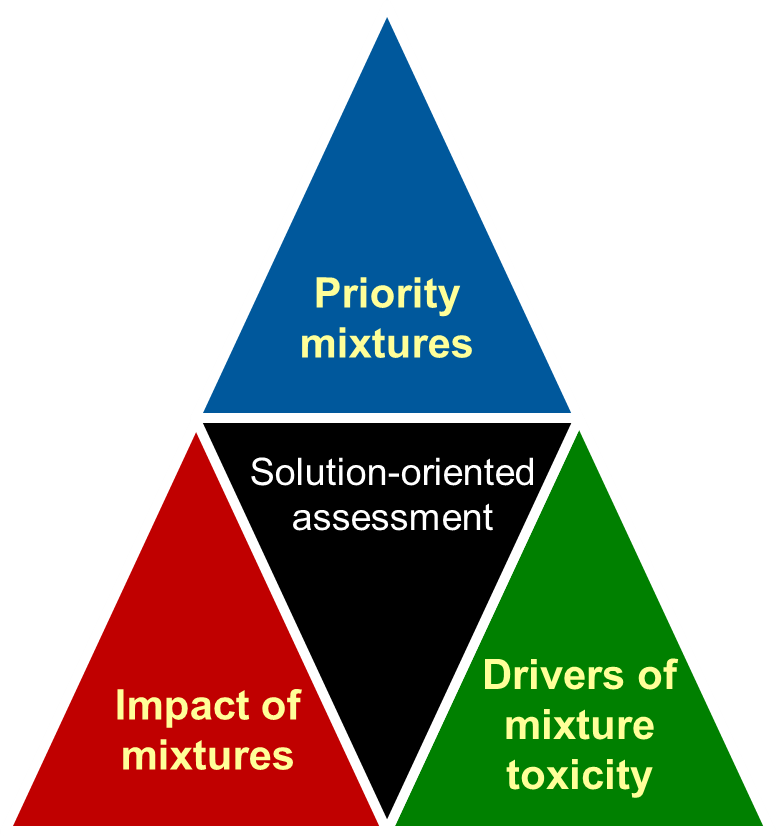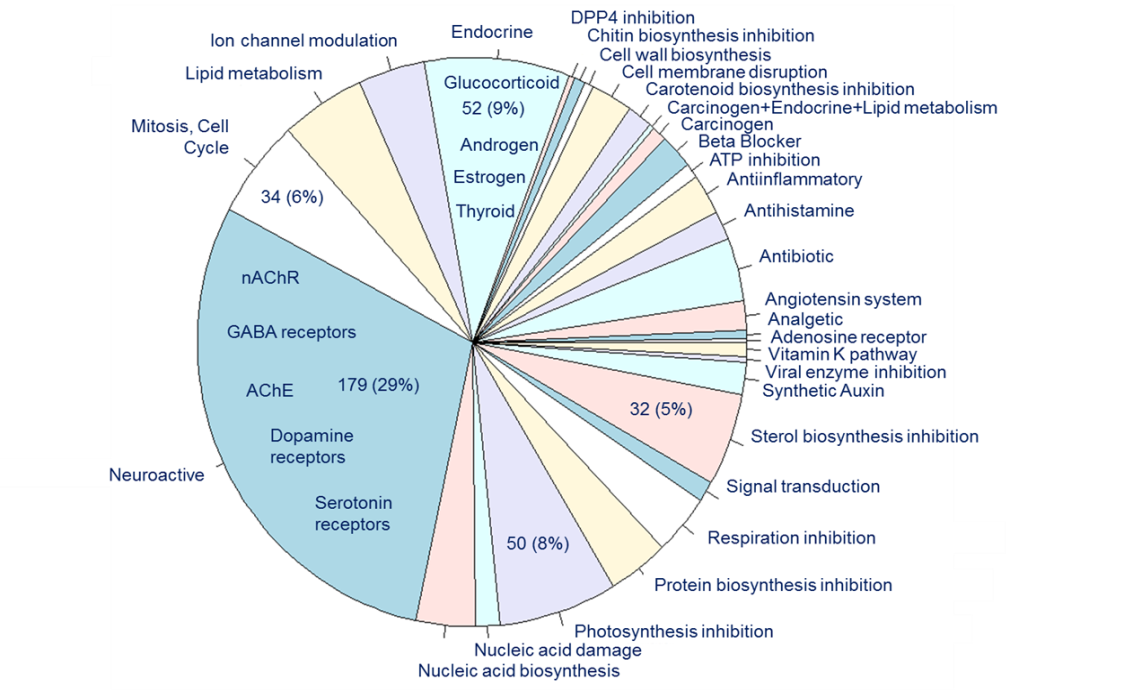Post a comment on the text below
2.4. Dealing with mixtures of chemicals
For establishing causal relationships between chemical pollution and ecological effects, it has to be appreciated that in the real world there are no cases where only a single substance occurs in the environment. Emissions data and research show that the aquatic environment has to deal with mixtures of chemicals, which contain many more substances than just the priority substances. Nutrients from urban point sources, agricultural diffuse pollution, metals from stormwaters from cities and atmospheric deposition, as well as many potentially harmful organic chemicals from urban waste water and agriculture, have been shown to be present in freshwater systems simultaneously. Indeed, scientific monitoring approaches highlighted the co-occurrence of hundreds of chemicals in different freshwater bodies (e.g. Loos et al. 2009 & 2013, Moschet et al. 2014). This complexity mismatches with the single substance approach of current chemicals assessment under the WFD.
The occurrence of chemical mixtures in freshwater systems is the result of different sources and different patterns in time, space and concentration (e.g. Baker & Kasprzyk-Hordern 2013, Beckers et al. 2018) and so does the respective risk for the ecosystems. The challenge is to figure out which of the many substances present are most important for the toxicity of a mixture.
Efforts exist to simplify this complicated picture. In essence, these aim to separate and categorize the issues of pollution, impact and identification of key chemicals to achieve a problem-targeted assessment (figure 2.5). Statistical methods are used to characterise complex pollution situations and relate these to sources (Posthuma et al. 2017). This approach offers the potential for identifying categories of mixture: “typical” i.e commonly-occurring, or “priority” i.e. containing substances which are of particular concern in a mixture, for instance because they promote toxicity. This is particularly relevant for the diverse and numerous organic micropollutants for which single representative candidates on lists of regulated substances are often outdated or may be substituted by substances with potentially similar toxicity when regulation comes into play. The combined action of similar compounds occurring together is not captured at all (Altenburger et al. 2015).
Examples for co-occurrence of similar compounds comprise the neonicotinoid insecticides imidacloprid, thiacloprid, acetamiprid which have been shown to occur simultaneously in water bodies but also antibiotic drugs such as azithromycin, erythromycin, and clarithromycin or the herbicides (e.g. diuron and isoproturon).
Figure 2.5: Dealing with mixtures in water management through differentiation into pollution (priority mixtures), effect (impact of mixtures) and risk (drivers of mixture toxicity) issues (modified from Altenburger et al. 2015)

A study by Busch et al. (2016) described the diversity of potential molecular targets for contaminant-biosystem interactions. In this study 426 organic chemicals were summarized to be detected in European freshwaters, containing 173 pesticides, 128 pharmaceuticals, 69 industrial chemicals and 56 other compounds. These targeted more than 100 different biological molecules known to exist in aquatic organisms. This complicated picture was simplified by considering the ways in which the chemicals acted upon organisms – “modes-of-action”. 30 mode-of-action categories were identified for freshwater contaminants (figure 2.6), so that even with a potentially unlimited number of chemicals, there is a limited range of adverse biological effects. This approach could be used to simplify toxicity assessment.
Figure 2.6 Modes of biological action of organic micropollutants in European freshwaters

Source: Busch et al. 2016)
Notes: Abbreviations: GABA – gamma-Aminobutyric acid (chief inhibitory neurotransmitter in the mammalian central nervous system); nAChR - nicotinic acetylcholine receptor (see table 3.1); ATP – adenosine triphosphate (energy carrier in the cells of all known organisms), DPP4 - Dipeptidyl peptidase-4 (an enzyme)
You cannot post comments to this consultation because you are not authenticated. Please log in.



Previous comments
POLAND
Text to be adapted to a new definition of mode of action, in case it is changed in line with our proposal
DE-NW.
'The occurrence of chemical mixtures in freshwater systems is the result of different sources and different patterns in time, space and concentration (e.g. Baker & Kasprzyk-Hordern 2013, Beckers et al. 2018) and so does the respective risk for the ecosystems. The challenge is to figure out which of the many substances present are most important for the toxicity of a mixture.'
Please amend ...if toxicity of the mixture was found.
DE-NW:
'… the chemicals acted upon organisms – “modes-of-action”. 30 mode-of-action categories were identified for freshwater contaminants (figure 2.5), so that even with a potentially unlimited number of chemicals, there is a limited range of adverse biological effects. This approach could be used to simplify toxicity assessment.'
Splitting up compounds in a limited number of MoAs is surely a step in the right direction for reasons of appliability. However there are still many blind spots and unknown MoAs. As scientific work about Adverse Outcom Pathways show, processes in organisms can interfere at many different molecular and physiological stages which will be probably underestimated by a too limited number of categories. The approach has to be aware of its open flanks.
DE-UBA IV 1.3:
We are of the opinion, that in this chapter it should be stressed that for successful evaluation of mixture toxicity the extend and quality of chemical monitoring is crucial. The present chemical monitoring (of pesticides) under WFD apparently is not adequate do characterise the chemical cocktail and assess mixture toxicity.
The paper encourages assessment of mixtures. Where the data basis allows this we welcome such an evaluation. This approach can be combined with bioassays (see following chapter) or biological monitoringdata resulting in a so called 'integrated monitoring'. A recent example from Switzerland is presented by Langer and Junghans (Aqua and Gas No 4, 2017 page 58).